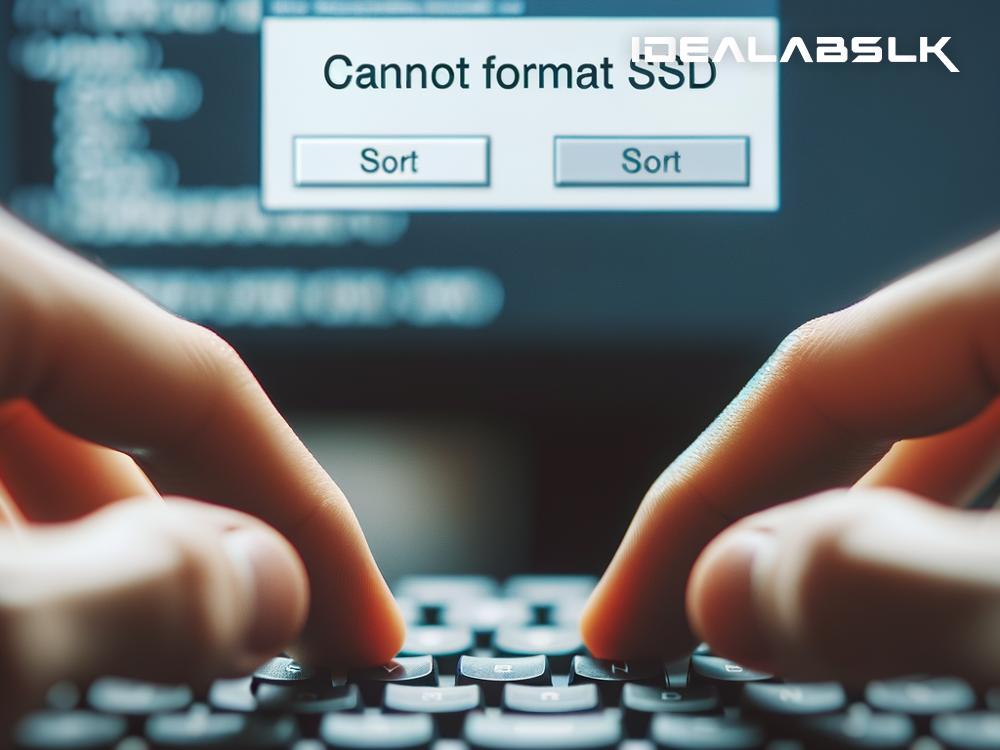How to Fix the "Cannot Format SSD" Problem on Windows PCs
Formatting an SSD (Solid State Drive) should be as easy as pie. But sometimes, Windows PCs throw a curveball with the frustrating 'Cannot Format SSD' issue. If you’re reading this, chances are you’ve run into this wall. But don’t worry! We’ve got some handy tricks up our sleeve to get your SSD formatted and have you back in business in no time.
What Causes the ‘Cannot Format SSD’ Issue?
Before diving into solutions, understanding why your PC refuses to format the SSD might help you choose the right fix. Common culprits include:
- The drive is set to read-only: This prevents any changes, including formatting.
- The SSD has corrupted files or bad sectors: Affects the SSD’s functionality.
- Driver issues: Outdated or corrupted drivers can cause a myriad of issues.
- Partition problems: Sometimes, the problem lies not with the entire SSD but with specific partitions.
With that groundwork laid, let's look at how to tackle this problem.
Solution 1: Clear Read-Only Status
If your SSD has somehow been set to read-only, it won’t allow formatting. You can change this status using the Command Prompt.
- Press
Windows Key + Xand chooseCommand Prompt (Admin)orWindows PowerShell (Admin). - Type
diskpartand hit Enter, then typelist diskand press Enter again to list all disks. - Identify your SSD (probably by its size) and type
select disk #, with # being the number of your SSD. - Finally, type
attributes disk clear readonlyand hit Enter.
This command removes the read-only attribute, potentially solving your problem.
Solution 2: Check for Errors using CHKDSK
Corruption or bad sectors can prevent the SSD from formatting. Windows’ CHKDSK tool can help.
- Open Command Prompt or PowerShell as an admin, like before.
- Type
chkdsk E: /f /r /x(replaceE:with your SSD’s letter). This command will force the drive to unmount, then locate and fix any errors or bad sectors.
It might take some time, but it could bring your SSD back to a healthy state.
Solution 3: Update or Reinstall Drivers
Outdated or corrupted SSD drivers could be the culprit. Updating or reinstalling might do the trick.
- Update Drivers: Go to
Device Manager(right-click on Start), find your SSD under ‘Disk drives’, right-click on it, and chooseUpdate driver. Windows will search for and install any available updates. - Reinstall Drivers: In
Device Manager, right-click the SSD and selectUninstall device. Restart your computer, and Windows will automatically reinstall the driver.
Solution 4: Delete SSD Partitions
Sometimes, the issue could be with a partition rather than the whole drive. You can delete and recreate partitions using the Disk Management tool.
- Press
Windows Key + Xand selectDisk Management. - Find your SSD, right-click on its partitions one by one, and choose
Delete Volume. Confirm the action if asked. - Once all partitions are deleted, you can right-click on the unallocated space to create a new simple volume and try formatting again.
General Tips and Tricks
- Backup Important Data: Before attempting any fixes, ensure your data is backed up. Formatting will erase everything on the SSD.
- Use Third-party Tools: If none of the above methods work, consider using third-party formatting tools. They often have more powerful features than Windows’ built-in tools.
When to Seek Professional Help
If none of these solutions work, your SSD might have a more serious issue at hand. In such cases, it’s best to consult with a professional. Continuing to attempt fixes could result in data loss or further damage to the SSD.
Fixing the ‘Cannot Format SSD’ issue can range from a simple command line tweak to more time-consuming methods like checking for errors or dealing with bad sectors. While it might seem daunting, following these steps one by one can resolve the problem in most cases. Remember, ensuring your data is backed up before attempting any fixes is crucial. If all else fails, seeking professional help might be your best bet.
Happy computing, and may your SSD formatting be smooth and hassle-free!

